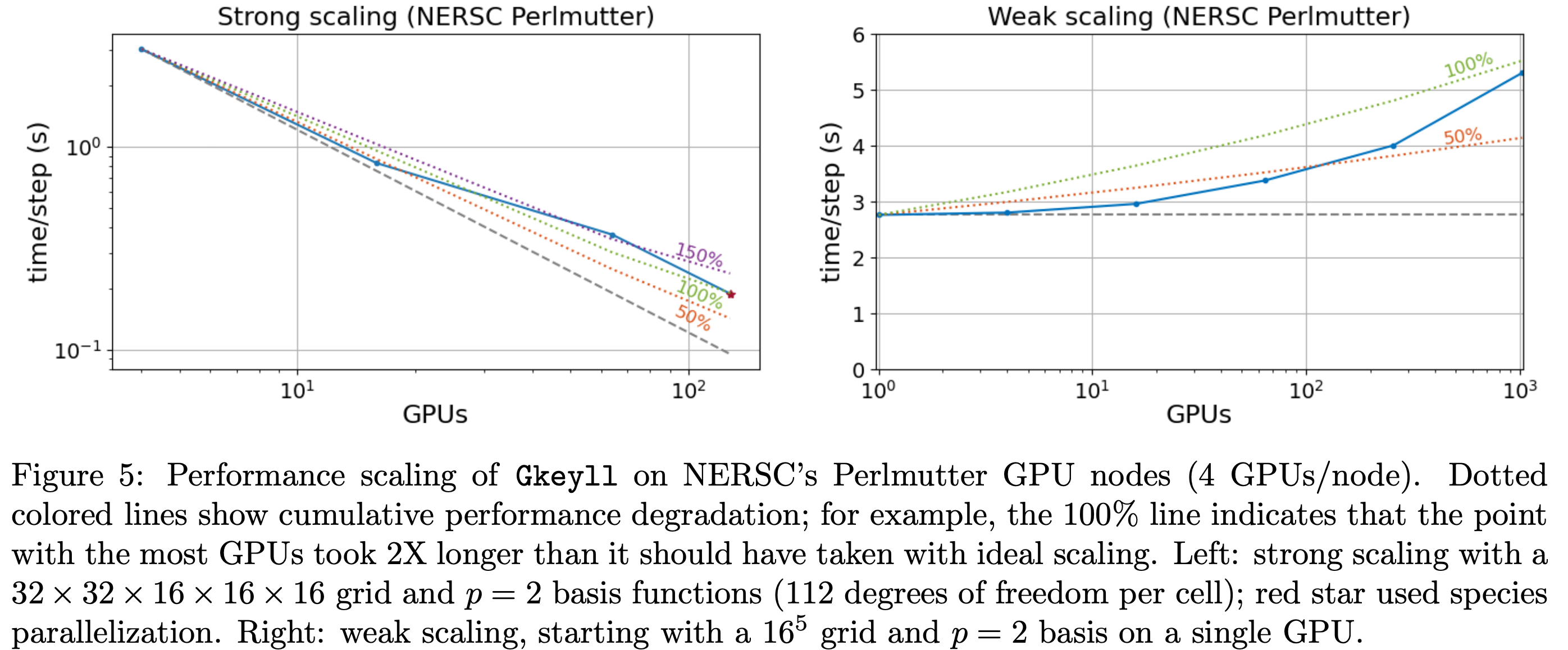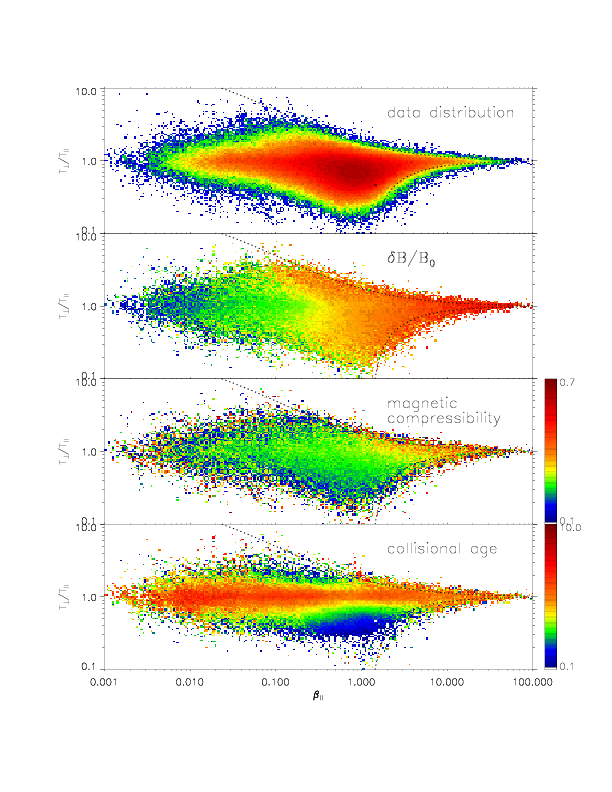High-dimensional Simulations of Collisionless Shocks
Collisionless shocks play an important role in the heliosphere by irreversibly converting the energy of supersonic plasma flows into other forms, including heat, energetic particle acceleration, and electromagnetic field energy. At the forefront of research efforts on collisionless shocks is the question of how the kinetic instabilities that arise naturally in the shock transition impact the stability of the shock, the energization of particles, and the ultimate partitioning of energy among different forms through the shock. For example, the high-energy particles accelerated at shocks associated with solar flares and coronal mass ejections from the Sun pose a significant extreme space weather threat to the spaceborne technology upon which our nation's economy and society depend, such as satellite communication and GPS navigation. The development of cutting-edge simulation codes that model the shock dynamics in the six-dimensional phase space (3D3V, three dimensions of physical space and three dimensions of velocity space) of collisionless plasmas is critical to developing a predictive capability for the energization of particles as collisionless shocks.
Here we aim to extend the application of the continuum Vlasov solver in the Gkeyll suite of simulation codes, developed by the Princeton Plasma Physics Laboratory, to the higher dimensionality essential to capture the key physics of kinetic instabilities at quasiparallel collisionless shocks. Previous investigations have used Gkeyll successfully to model quasiperpendicular collisionless shocks in lower dimensions (1D2V and 1D3V), but for quasiparallel shocks capturing the physics of kinetic instabilities requires minimally modeling the dynamics in at least two spatial dimensions (2D3V). This project aims to achieve the successful modeling of a quasiparallel collisionless shock to provide an unprecedented view of the phase-space dynamics and energetics using a continuum Vlasov solver, thereby providing our nation a valuable new tool to predict the acceleration of high-energy particles that pose a threat to our nation's spaceborne technological assets.
Gkeyll Performance on Perlmutter
We have performed strong and weak scaling tests using multiple GPUs on Perlmutter, the flagship system at the Department of Energy's National Energy Research Scientific Computing Center (NERSC). Each Perlmutter node contains four NVIDIA A100 GPUs. The strong scaling shows the performance for a (Nx,Ny,Nv^3)=(32,32,16^3) problem using quadratic (p=2) basis functions in the discontinuous Galerkin scheme using N_GPU= 4, 16, 64, 128 GPUs, with performance eventually degrading due to insufficient compuational load per GPU at the largest GPU numbers. The weak scaling starts with a (Nx,Ny,Nv^3)=(16,16,16^3) with p=2 basis functions on a single GPU, and scales up to N_GPU= 4, 16, 64, 256, 1024 GPUs with the size of the computational gird increasing by the factor N_GPU for each case. Here we see the time per step increasing to 1.9 times the ideal performance at the largest run with 1024 GPUs.

In addition to the heating of the plasma by the dissipation of turbulence, temperature anisotropy instabilities can act on the collisionless solar wind plasma to redistribute particle energy. My collaboration with researchers at UC Berkeley, including the group of Stuart Bale at the Space Science Laboratory and Eliot Quataert of the Department of Astronomy, has been examining the electron temperature anisotropies in the undisturbed, near-earth solar wind. We have found clear evidence of the action of electron temperature anisotropy instabilities in the solar wind, as shown in the preliminary data below. We hope to submit this work-in-progress for publication before the end of the year.

|